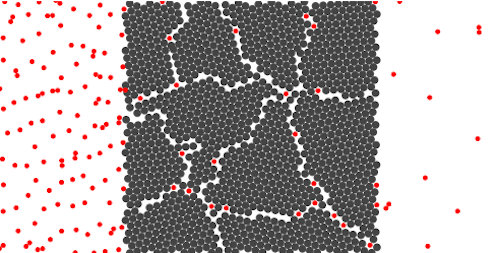Hydrogen Permeation in Nuclear Materials
Proposals for Research Agreements and Research Contracts as part of this CRP can now be submitted at the IAEA's Coordinated Research Activities webpage
This CRP will seek to enhance the knowledge base and reduce uncertainties in data concerning the migration of hydrogen in materials of relevance to nuclear fusion reactors. Materials of particular interest are:
- Tungsten, as used in the ITER divertor;
- Various types of reduced-activation ferritic/martensitic steel (RAFM), currently thought of as candidates for the first wall of a future demonstration power reactor and likely used for some components of ITER,
- Copper and the copper alloy known as CuCr1Zr0.1 (also proposed as a structural material for components such as the cooling system of a nuclear fusion reactor).
It is important to know as much as possible about the behaviour of these materials with respect to permeation of hydrogen in order to assess their suitability with respect to containing and isolating the tritium fuel of a fusion reactor from the surrounding components. Of particular concern is the possibility of tritium finding its way into the coolant water where it would pose a potentially serious environmental hazard.
Although the precise mechanism is not understood, it is well-known that trapped hydrogen reduces the ductility of many materials, including steel, a phenomenon known as hydrogen embrittlement or hydrogen-induced cracking. For safety and operational reasons it is important to understand and mitigate the potential damage that could be caused to key components in a fusion reactor, including the large number of diagnostic ports needed in experimental reactors such as ITER.

The study of hydrogen permeation in these materials is further complicated by the elevated temperatures present under normal operation of a reactor and the anticipated damage they will suffer due to irradiation by the energetic neutrons produced in the fusion reaction. Also of relevance is the nature of the material surface, which is altered by interaction with the plasma through erosion and preferential sputtering of certain component atoms.
Several cooperative research activities, round-robin exercises and comparison workshops are planned as part of this CRP:
- Gas-driven permeation (GDP): round-robin exercise
- Hydrogen permeation in neutron-irradiated materials: round-robin exercise
- Thermal Desorption Spectrometry for Fusion (TDS4F): round-robin exercise
- Plasma-wall interaction (PWI) modelling using rate theory codes: code comparison workshop
- Preparatory Consultancy Meeting of the Hydrogen Permeation CRP
- First Research Coordination Meeting of the Hydrogen Permeation CRP
- Technical Meeting on Nuclear Fusion Fuel Permeation in Reactor First Wall Components
- Technical Meeting on the Effects of Hydrogen Supersaturation and Defect Stabilization in Nuclear Fusion Reactor Materials
- Second Research Coordination Meeting of the Hydrogen Permeation CRP
- Third Research Coordination Meeting of the Hydrogen Permeation CRP